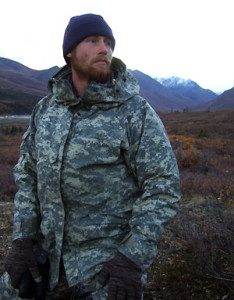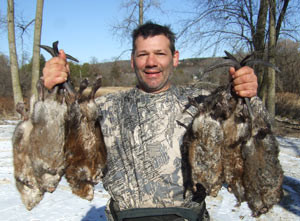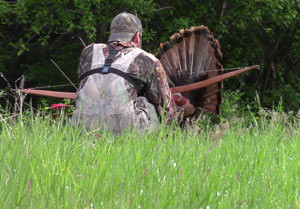
This is my main page for survival hunting and trapping. These are links to proven ways you can hunt, trap and snare animals in a survival situation.
Please understand that I hate killing things. I do it because if I don’t kill and eat something, I die. And I kinda like staying alive. So, I kill things. But I do it with as much respect to the animal as I can.
Here’s a list of things that I follow as closely as possible when it comes to hunting and trapping. And these apply to survival situations as well as for sport.
Make a Clean Kill
First of all, make a clean kill. The faster the animal dies and the less suffering, the better. Learn where the kill zones are when hunting.
If you’re trapping, set traps that kill right away, either on impact or by drowning the animal quickly. Use leg holds and traps that constrict an animal’s movement only when nothing else will work. I can tell you from experience that it’s pretty sickening to find a leg and nothing else in a trap. Learn from my mistakes.

Same thing with snares. Set them so they kill the animal right away. You don’t want to be responsible for maiming an animal and make it suffer. This is especially true when setting survival snares with primitive gear. You don’t want to assume that what works with a wire snare will work with twisted fiber, it often doesn’t.
Use the Animal Wisely
Use as much as you can from any animal you kill. You’ll certainly want to take all the meat and edible internal organs. You can also cook the bones, eat the meat off them, and grind them into a nutritious paste. Take anything else you can use like the stomach, tendons and esophagus.
But… and this is where I disagree with well-intentioned laws in some areas, sometimes you want to leave a little food behind for the natural predators in an area. That’s especially true if you aren’t in a survival situation.
You are taking the food source of the coyotes, badgers, foxes, hawks, owls and mountain lions. All those predators will scavenge anything you leave behind, providing them with at least some of a meal they might have gotten all of if it wasn’t for you.

Don’t Hunt or Trap Unless You Have Water
Also, remember that if you don’t have plenty of water, you don’t want to eat anything at all, especially meat. It takes a lot of water to digest protein. If you are eating meat but aren’t drinking enough water, your body will suck the water right out of your cells to digest the meat. And that will dehydrate you even more.
In some of the instruction here I use modern ways to acquire game. In other cases it’s pure primitive where you are going out with nothing but a knife.
Wherever I can, I make videos to go along with the articles and pictures. It takes a tremendous amount of work, but I know you guys appreciate it.
Survival Hunting And Trapping Links
Survival snaring with modern snares Here are the topics that are coming in this section on survival hunting and trapping: Survival hunting – making an atlatl Survival hunting – throwing sticks traditional archery and how to make a selfbow. Survival trapping with modern traps Survival trapping with primitive traps Survival snaring with primitive snares






































![Air gun 101: The differences between .177 & .22 – Which jobs they do best ? [Infographic]](https://airgunmaniac.b-cdn.net/wp-content/uploads/2024/11/1773-150x150.jpeg)

